A few days ago, Lori and I finally took the leap and made our way down to Xochimilco Floating Gardens—one of Mexico City’s most loved (AND hated) attractions. It comes at the tail-end of a ten-day stay in CDMX (let’s just say we were dragging our feet a bit on this one).
In light of the dozens of mixed reviews we’ve heard and read regarding the “Venice of Mexico”, we weren’t sure if a day trip to the far southern reaches of this huge city was warranted. In the end, we were very happy we took the plunge.
Here is our first-hand guide to Xochimilco Floating Gardens, including Pros & Cons for doing a boat tour, cost-saving tips, a step-by-step guide for how to get there on your own, and tips for avoiding scams.
We’ve included lots of first-hand tips you simply won’t find in any other Xochimilco guide!
Looking for an easy option?
▸ If you just want a no-hassle Xochimilco boat trip experience (plus a little extra), then check out this top-rated private tour of Xochimilco, Coyoacan & Frida Kahlo Museum with transport from central CDMX!
▸ Or…if you’re craving something a bit more festive, then take a look at this Xochimilco & Mexican Party boat trip with unlimited drinks!
This post contains affiliate links. If you click and make a purchase, we might receive a commission (at no added cost to you). Thanks for supporting independent, ad-free blogs!
About Xochimilco Floating Gardens
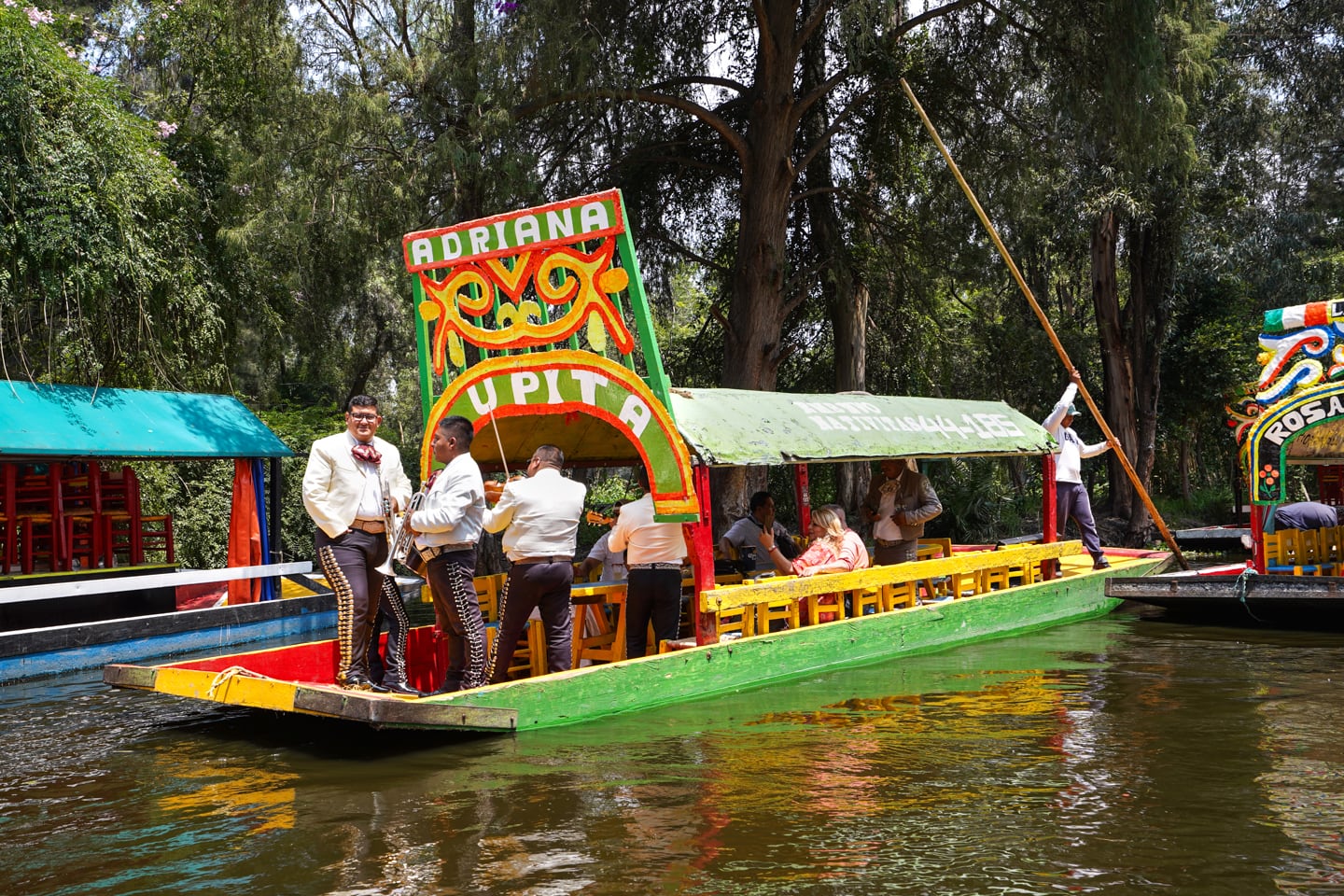
Located just 10 miles from the center of the largest city in North America (as the crow flies), Xochimilco (pronunced: shoat-shee-MEEL-coh) feels like a place yanked from an entirely different time (and hemisphere).
But Xochimilco’s always been a bit different.
The residents of Xochimilco were plying these waters long before the arrival of the Spanish some 500 years ago. In fact, they created the canals themselves by building up shallow areas of what was then Lake Xochimilco for cultivation.
This laid the groundwork for the chinampas or artificial islands that the boats navigate to this very day. The “Floating Gardens” moniker refers to these lush artificial islands, which have also been recognized as a UNESCO World Heritage Site.
Xochimilco Boat Tours
Which Boat Company to Go With
There are several embarcaderos offering Xochimilco tours. We recommend heading to the Nuevo Nativitas Xochimilco embarcaderos (see map, above). This is where the official tourism website recommends going and where we did our tour.
Also, this post covers the Traditional Canal Boat Tour, which is what most people choose to do (as opposed to the newer and longer ecological park boat tours).
(keep reading for more tips on how to avoid getting scammed throughout this guide).
There are a lot of companies listed in the general area of Nuevo Nativitas on the map above. I picked the most central pin for Embarcadero Nuevo Nativitas for sake of simplicity.
Tip: Don’t go looking for “Magical Xochimilco Trajineras”, just get yourself to the pin and look for someone with a lanyard. The companies here all share duties and you’ll be funneled to the next in line.
We’ve included detailed instructions on getting to Nuevo Nativitas on your own, below.
Xochimilco Boat Ride Cost
There’s a lot of outdated and just plain bad information out there, so let’s clear that up now.
The government sets the rate for Xochimilco tours, which is posted on an official sign at Nuevo Nativitas Xochimilco (see map, above). This isn’t the case at all embarcaderos, which is probably why so many people have reported paying much more than the published rate.
The rate was MX$600, but increased in July 2024. So, yes, the rate does go up from time to time. At one point, this rate may have been negotiable. But for all intents and purposes, you should plan to pay MX$750 for one boat for one hour (no haggling necessary).
Mind you, that’s not including transport between central CDMX or food and drinks, so definitely expect to pay more for package tours that include those sorts of things.
If you’re looking to cut costs, look for other visitors to share a boat with. Many of the boats at Nuevo Nativitas can accommodate up to 18 passengers (for the same flat fee), so there’s plenty of room if you choose to go this route.
How to Get to There
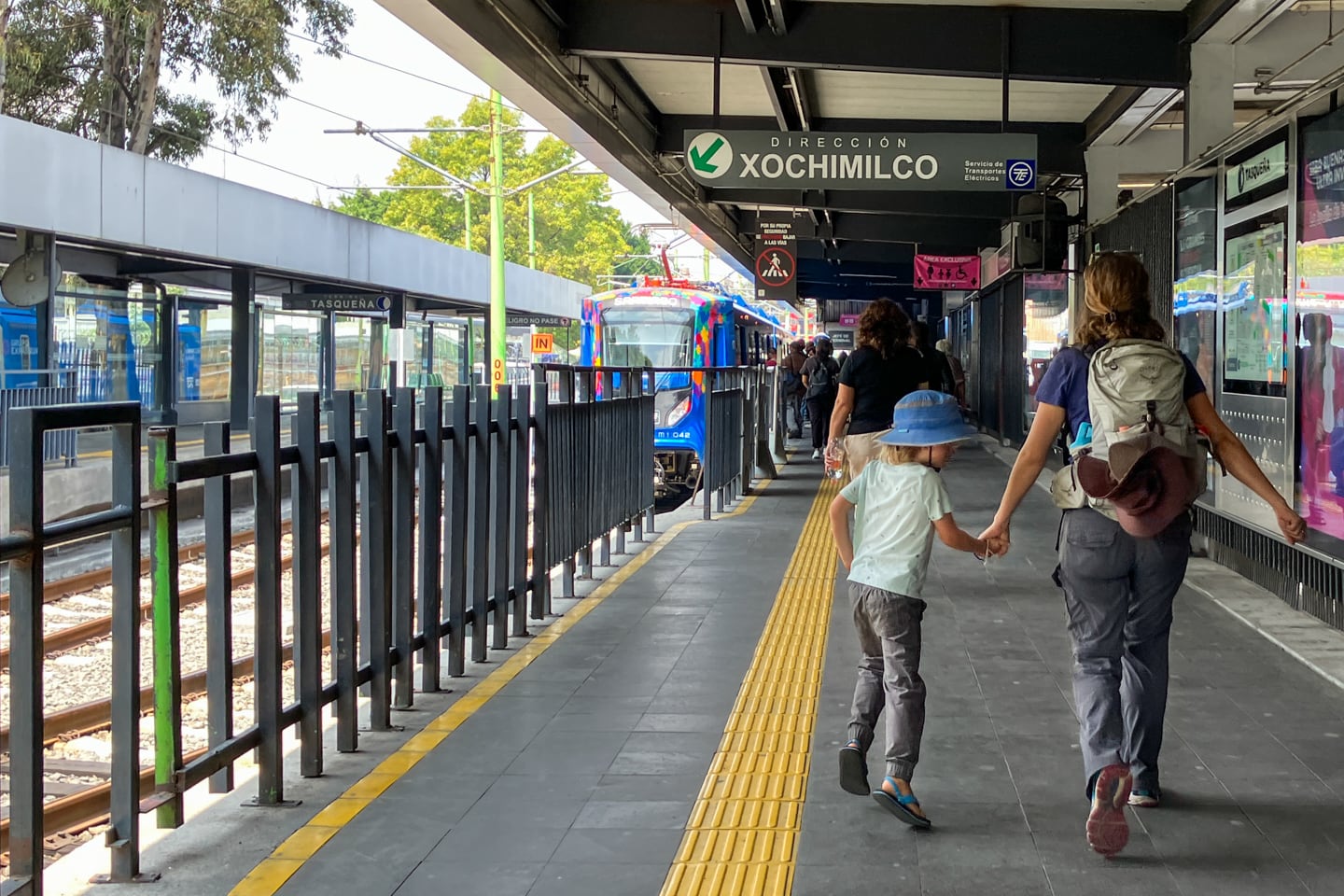
Getting to Xochimilco might be easier than you think!
Sure, you can take a package tour, or even an Uber (which will run you about MX$250-$400 each way depending on time of day).
But, if you’re like us and prefer trying to do these sorts of these on the cheap (or like a local), getting here by public transport isn’t as difficult as it may seem.
The hardest part is knowing where in CDMX you’re headed to (hint: it’s NOT the Nativitas Metro stop (really!). Don’t let the little gondola picture on the Metro map fool you!)
As mentioned above, you should plan to head to Embarcadero Nuevo Nativitas. Great! So how do we get there?
How to Get to Nuevo Nativitas Xochimilco by Public Transit
Leg 1: Central CDMX to Tasqueña
First, get yourself to the Blue Metro Line (No. 2), which are actually the orange metro trains—don’t ask me why. The important thing is that you’re on a #2 Metro train headed south toward the direction of Tasqueña. The Metro train currently costs MX$5 for most adults.
If you’re staying around the Zócalo (Plaza de la Constitución), you’re in luck! The #2 Metro serves the Zócalo/Tenochtitlan station. This leg of the journey from the Zócalo to Tasqueña takes about 20 minutes.
Leg 2: Tasqueña to Xochimilco Station
At Tasqueña station (the southern terminus of the #2 Line), exit the turnstiles and follow the signs to the Tren Ligero (Light Rail) bound for Xochimilco on the ground level.
It’s less than a hundred meters of walking between the two trains and this is the northern terminus of the Tren Ligero, which makes this a super easy transfer.
You will have to pay again at the Tren Ligero turnstiles (currently MX$3 for most adults). Expect this leg of the journey to take around 40 minutes.
Leg 3: Xochimilco Station to Embarcadero Nuevo Nativitas
This last leg might be the least straightforward. The boats at Nuevo Nativitas are located just over a mile east of the Xochimilco Light Rail station.
There is a public bus you can take for some of the journey, but it didn’t make sense for us given that you still have to walk about 15 minutes total on both ends (as opposed to walking the whole way, which took us about 30 minutes).
Of course, you could take a taxi or Uber. But if you’re able and willing to cover the distance on foot, the route is flat and not too complicated.
The quickest route on foot is to head east from the Light Rail station for three blocks on Av. Cuauhtemoc. Take a right onto Av. 16 de Septiembre, then a left onto Av. Hermenegildo Galeana and head straight for several blocks until you reach the embarcaderos.
Avoid the “Helpers” Around Xochimilco Station
If you plan to walk the final leg, be sure to ignore the official looking “helpers” milling about outside the Light Rail station “guiding” you to the boats.
In fact, most of these people are paid by other boat companies that charge much more than Nuevo Nativitas—one of several ways visitors end up parting with more cash than they planned to.
Why Visit Xochimilco Floating Gardens
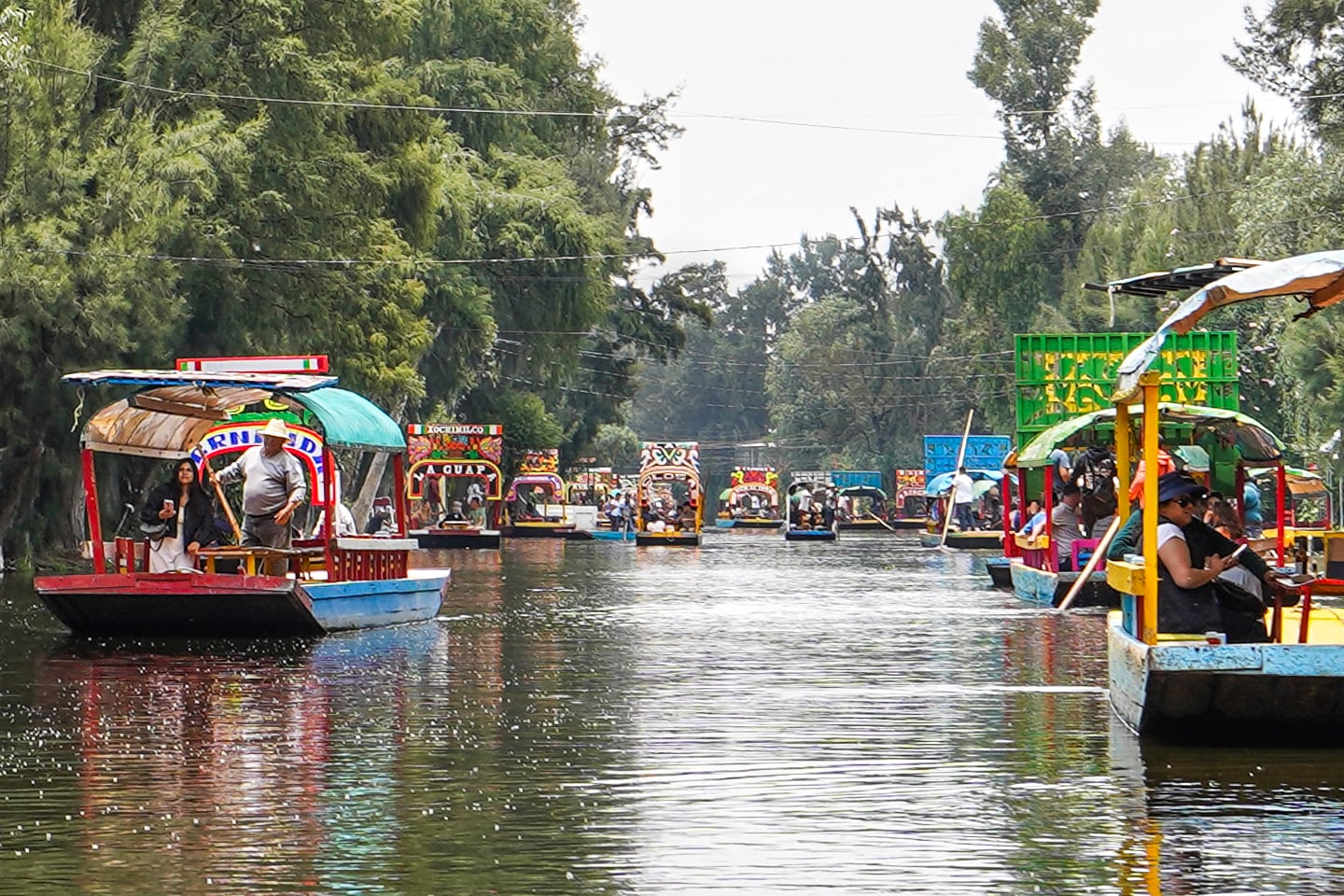
A Really Unique Cultural Experience (No Joke)
Today, many locals carry on the tradition of piloting the brightly colored gondola-style boats known as trajineras that ferry tourists around the area.
And Many more area residents still use this mode of transport for their own purposes—from taking their kids to and from school to moving produce to market.
But the cultural experience doesn’t end there. Perhaps just as interesting as taking in the area’s centuries-old canals and unique way of life is observing (and even taking part in) the modern day ritual of touring the canals Mexican-style. But we’ll get to that later.
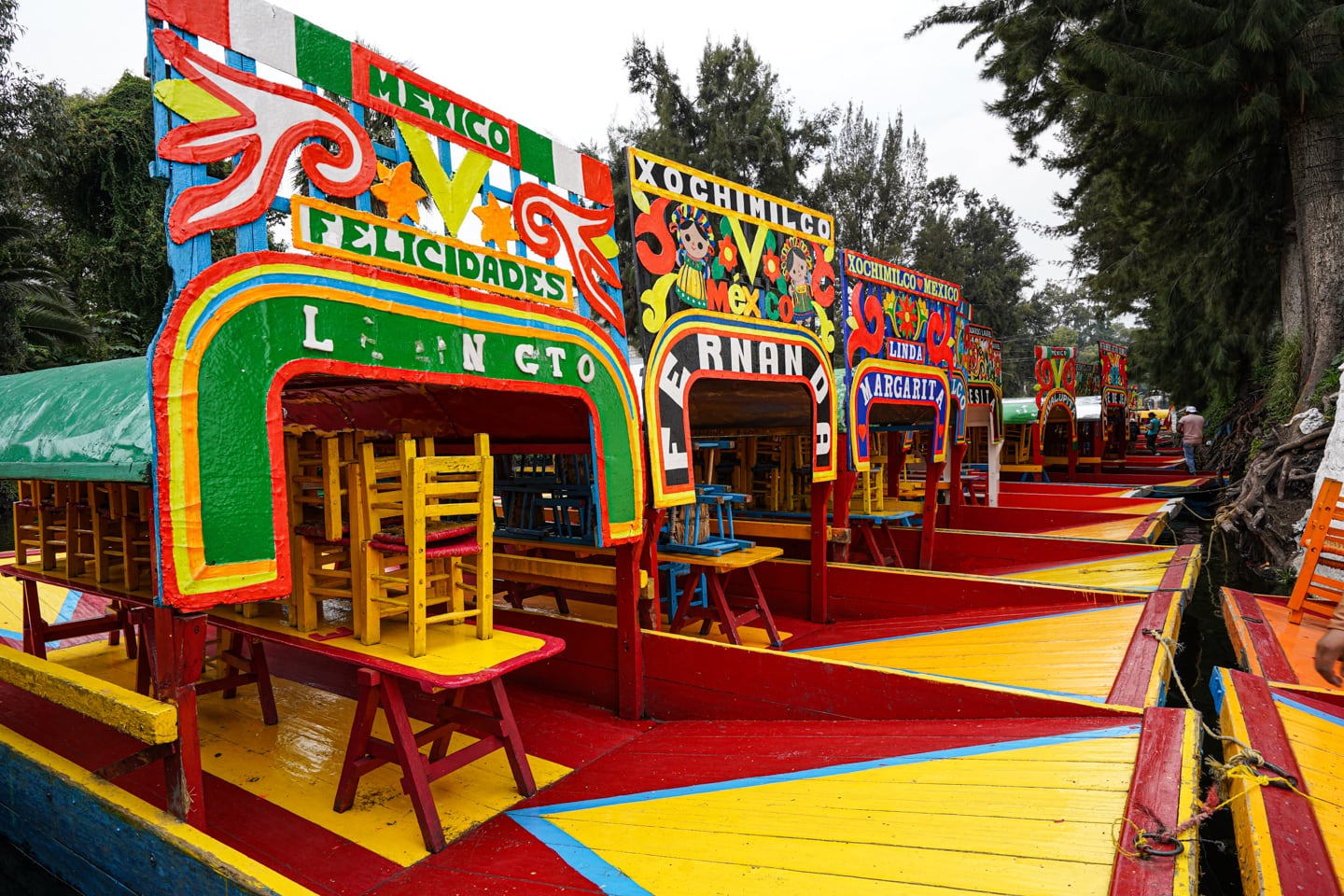
Xochimilco is a Photographer’s Dream
Vivid colors, interesting people, and a lush tropical backdrop. There’s more to take in on this journey than you could ever hope to capture digitally.
Keep an eye out for the regally-dressed Mariachi and Island of the Dead Dolls for an angle beyond the usual Xochimilco snapshots.
Get your shots, but be sure to save time to take it all in. At MX$750 (US$38) per boat per hour in August 2024 most visitors opt for just one hour on the canals, which goes by surprisingly fast, in my opinion.
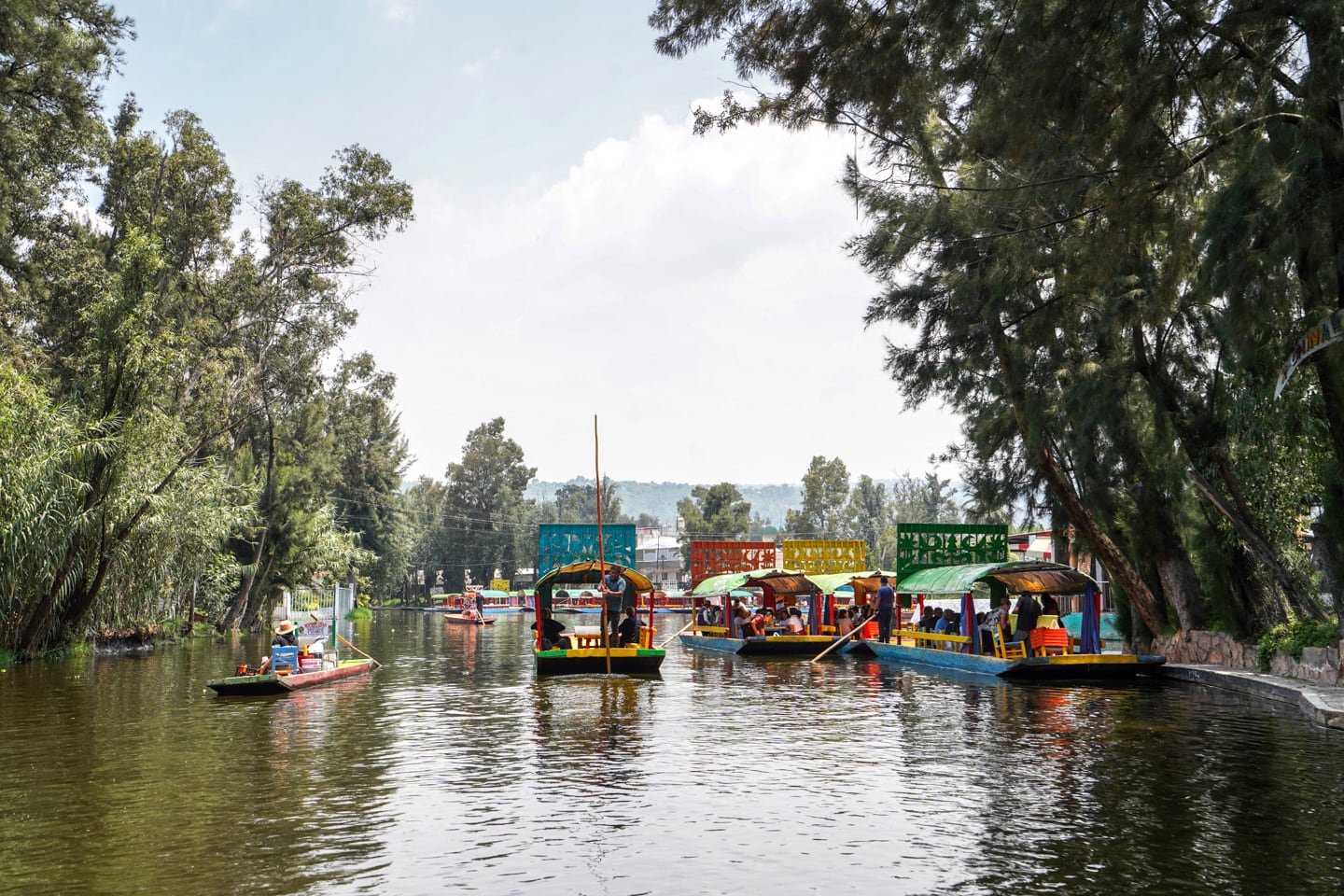
Bumper Boats!
Numero Tres on our list of reasons to visit the Floating Gardens of Xochimilco.
As you might expect from ancient human-made canals, these waterways can get quite narrow at times.
Even here on a Tuesday in the middle of rainy season, we had at least a dozen boats surrounding us at any given time. On weekends in the dry months, we hear it gets much more hectic.
Expect some light jostling as your skilled captain maneuvers your bus-sized gondola between the narrowest of spaces with nothing but a long wooden pole.
Yep, this is one attraction you’ll definitely want to keep your hands and feet inside the ride at all times.
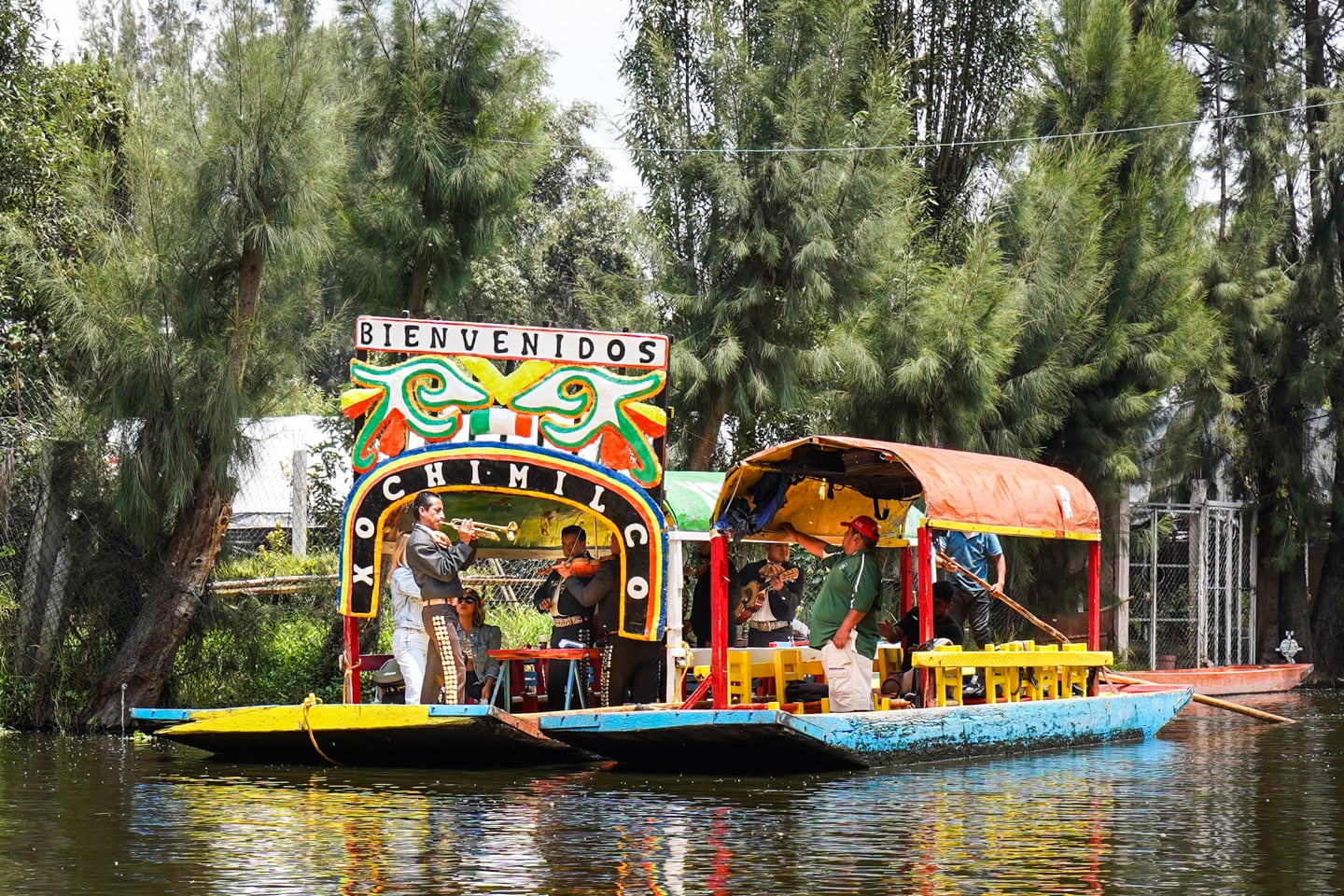
Free Live Music (Whether You Like It Or Not)
A Xochimilco Floating Gardens boat ride is a CDMX experience for all the senses, particularly if you choose to partake in the many goods and services on offer from neighboring boats—such as flowers, food and alcoholic beverages, and of course, Mariachi.
For the latter, just look for one of several small trajineras loaded down with a Mariachi band in full regalia to cozy up alongside for an impromptu tune.
For the full meal deal, you can even ask a group to board your vessel to entertain you (and anyone else in earshot) for the length of your canal cruise.
Heck, even if you weren’t personally planning on hiring a Mariachi boat band, don’t worry! Chances are close to 100% that you’ll get the full Mariachi experience at some point in your journey, thanks to passengers on a nearby boat who sprung for the service.
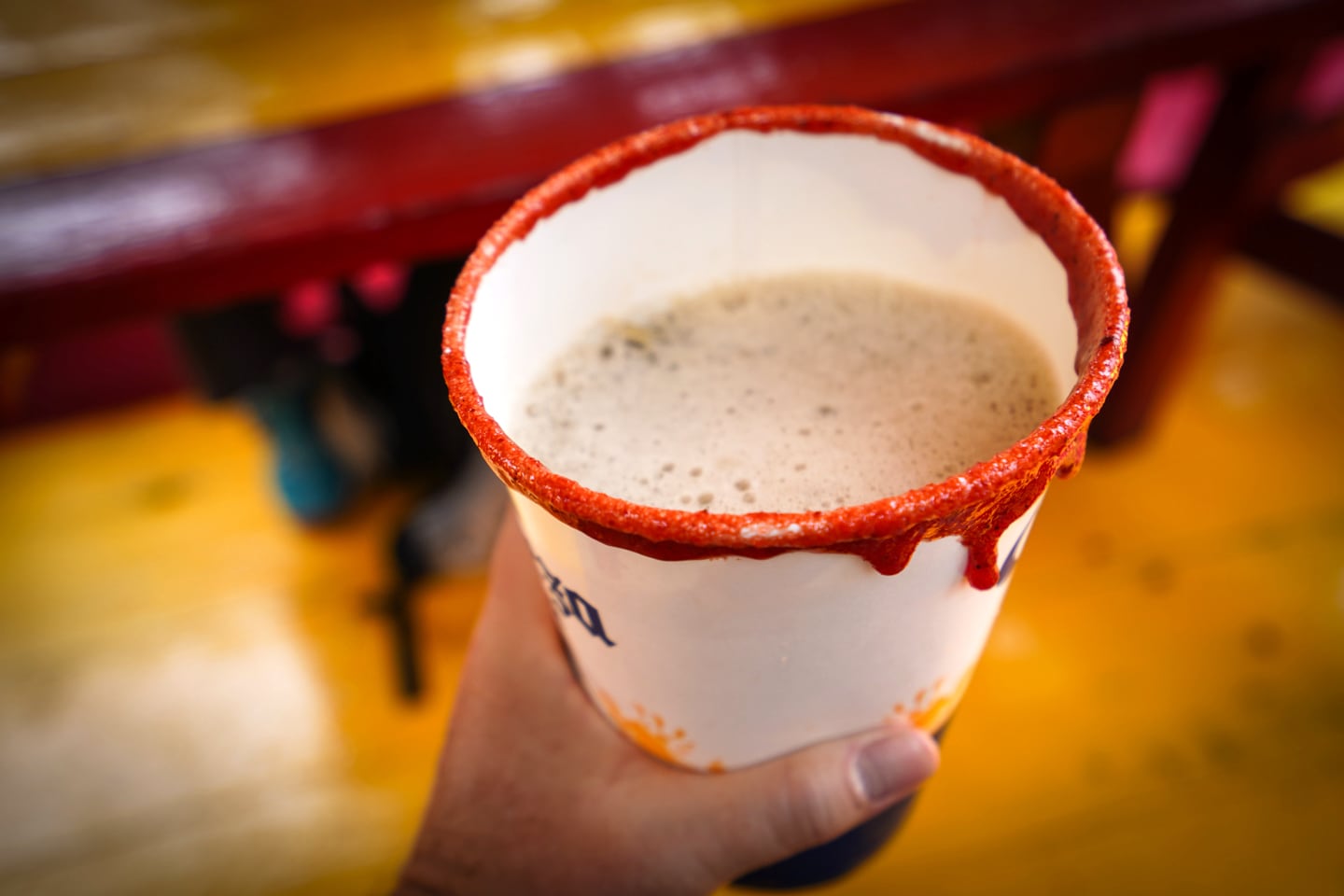
The Biggest Micheladas We’ve Ever Seen
If you like Micheladas, don’t know what they are, or simply want to do what the locals do on a Xochimilco canal tour, you’re in for a treat.
I’ll be honest, the Xochimilco take on the Michelada wasn’t exactly what I’m used to. Here, it’s a one-liter domestic beer of your choice, salt, lime juice, and a ridiculous helping of chamoy slathered on the rim of an even more ridiculous size cup—no Clamato or picante sauce, at least not in ours.
Thankfully, Lori was here to help me, because, spoiler alert: no toilets onboard these trajineras (so plan accordingly!).
Psst…If nature does call, there are a couple of stops along the way. Just ask your captain.
If a liter of sweet-and-sour beer doesn’t tickle your fancy, but you still want to try some of the local hooch, then a cup of Pulque (the ancient Aztec fermented drink of the gods) might be for you!
A Word of Caution Regarding Food & Drink
Even at the most-regulated embarcaderos like Nuevo Nativitas, food and drink ON the boat can be expensive.
For example, we paid MX$150 for our Michelada, which, in our minds wasn’t a terribly bad deal considering the size and location of said beverage.
We’ve heard several stories of food, in particular, being expensive on the boats.
One word of advice is to stock up on snacks, food, and drink prior to boarding the boat. There are a number of small abarrotes around the parking lot before you enter the boat launch area.
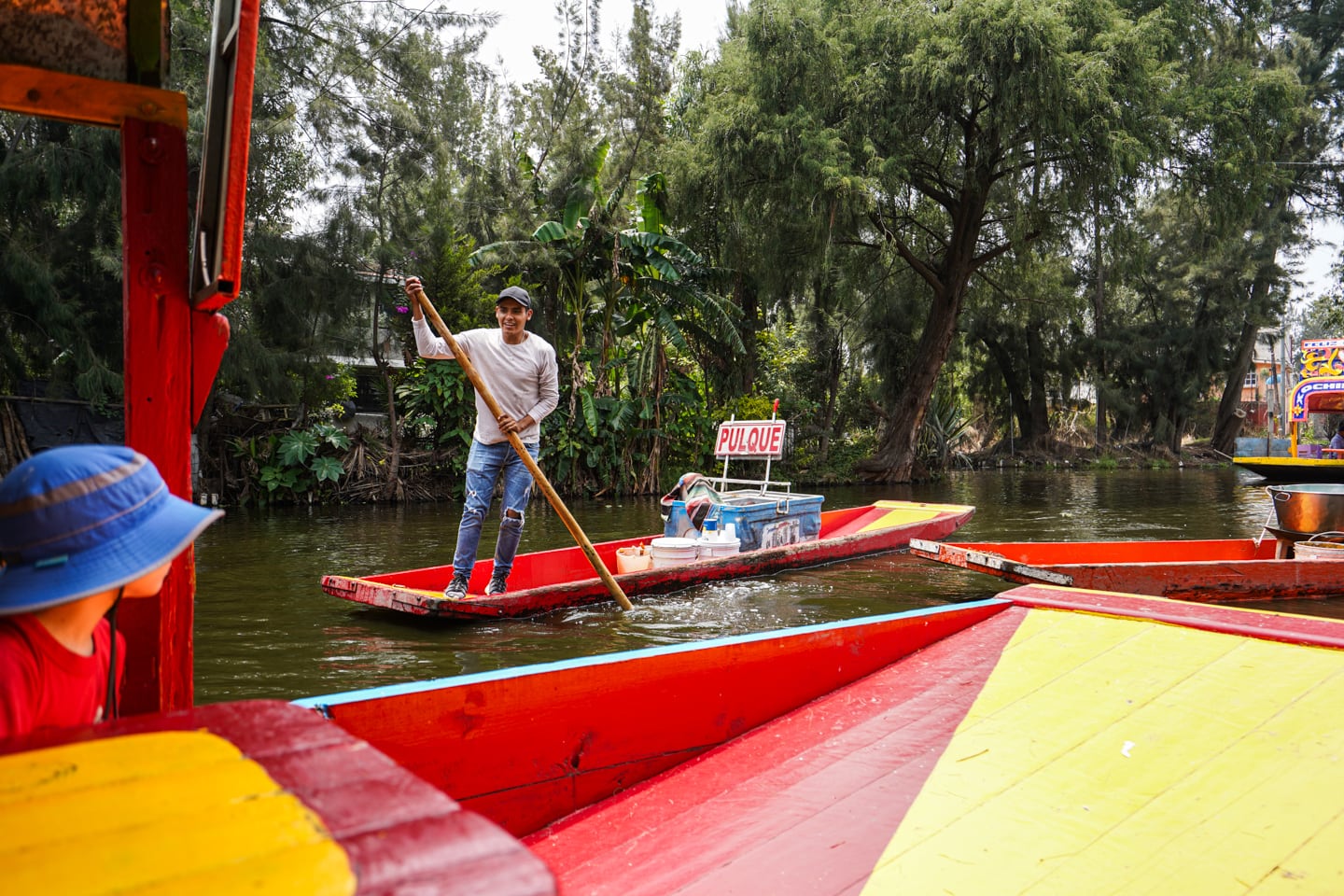
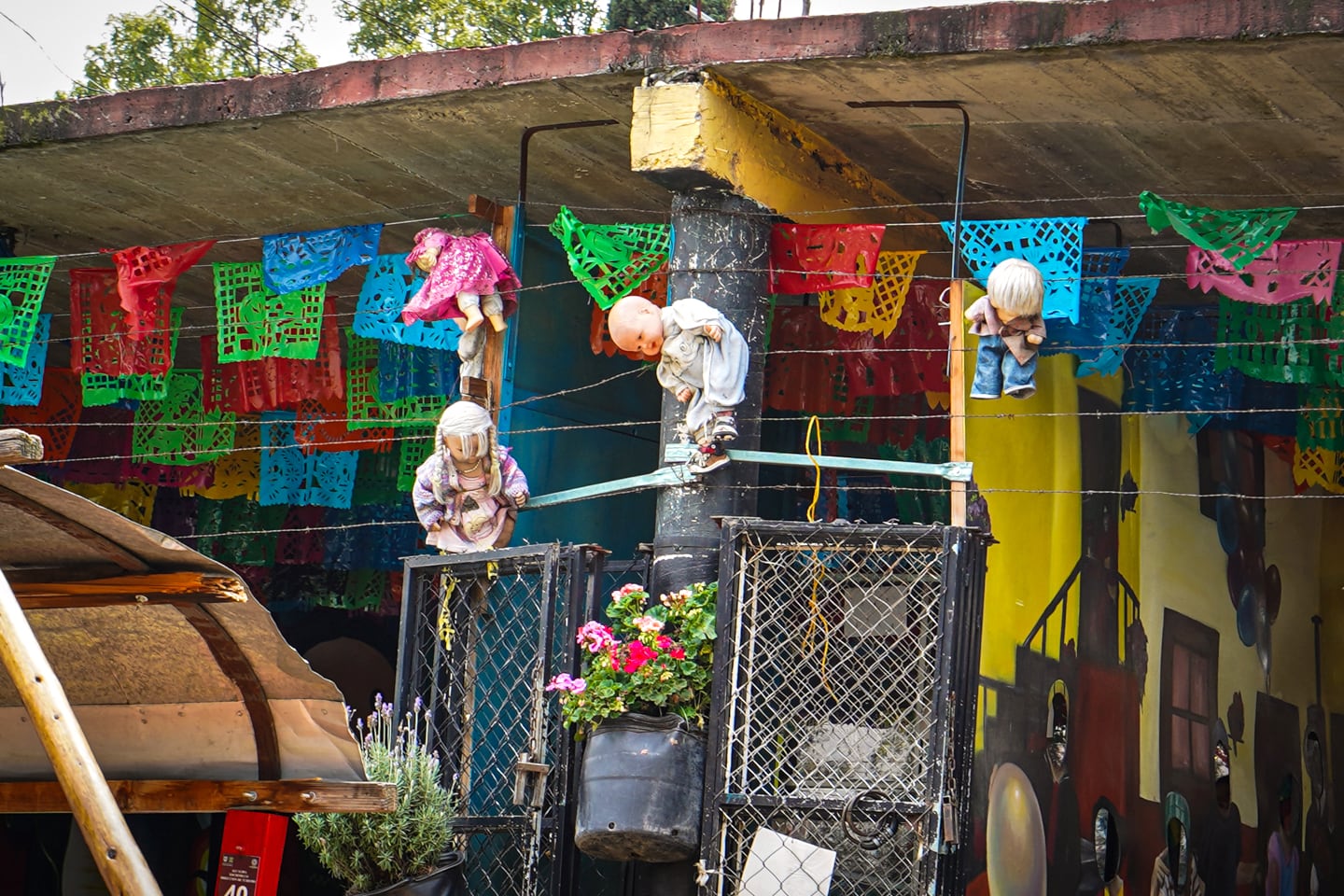
The Island of Dead Dolls (You Read That Right)
In terms of reasons to visit or not to visit the floating gardens of Xochimilco, this one could go either way.
If you’re into mysterious islands with a chilling past involving an eccentric doll collector, a young girl that may or may not have existed, and a lifelong obsession, well then, make sure to spend some time on La Isla de las Muñecas.
Or, like us, you can snap a few pictures and call it good.
Update
We learned a few days after our boat ride that the Island of Dead Dolls on the traditional Xochimilco boat tours route is actually a copycat.
The real Isla de las Muñecas is much harder to get to. Information for getting to the real island can be found here.
Why You Might Want to Skip Xochimilco
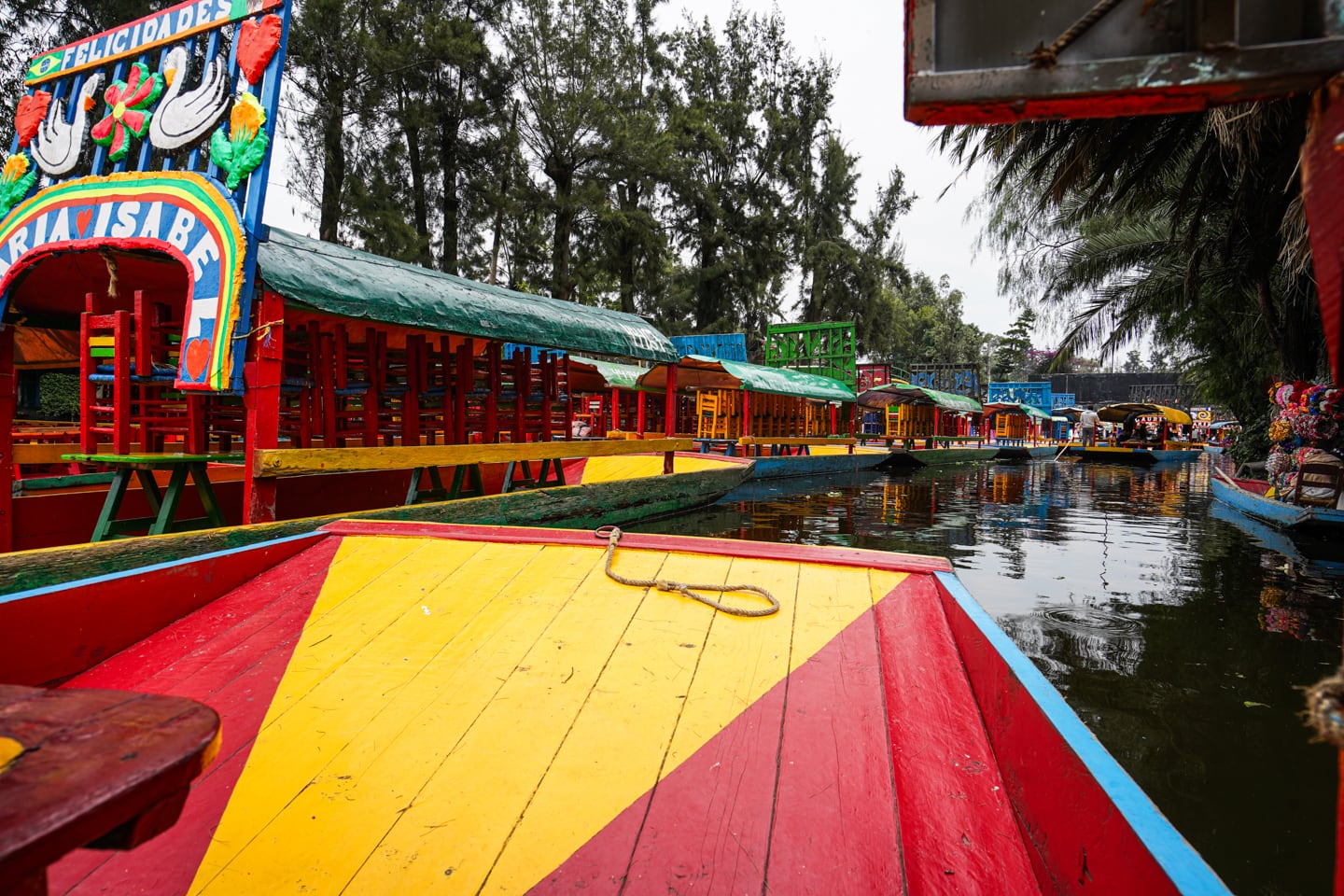
Lots of Opportunities to Get “Scammed”
We’ve come across countless reports of visitors to Xochimilco getting scammed one way or another. This most definitely was NOT our experience. We followed the tourism board’s advice on where to go and had no issues whatsoever.
With that said, if after reading our guide and tips above, you’re still concerned about the possibility of ending up in the wrong place, encountering the wrong touts, or getting on the wrong tour from central CDMX, then you may want to skip this day trip.
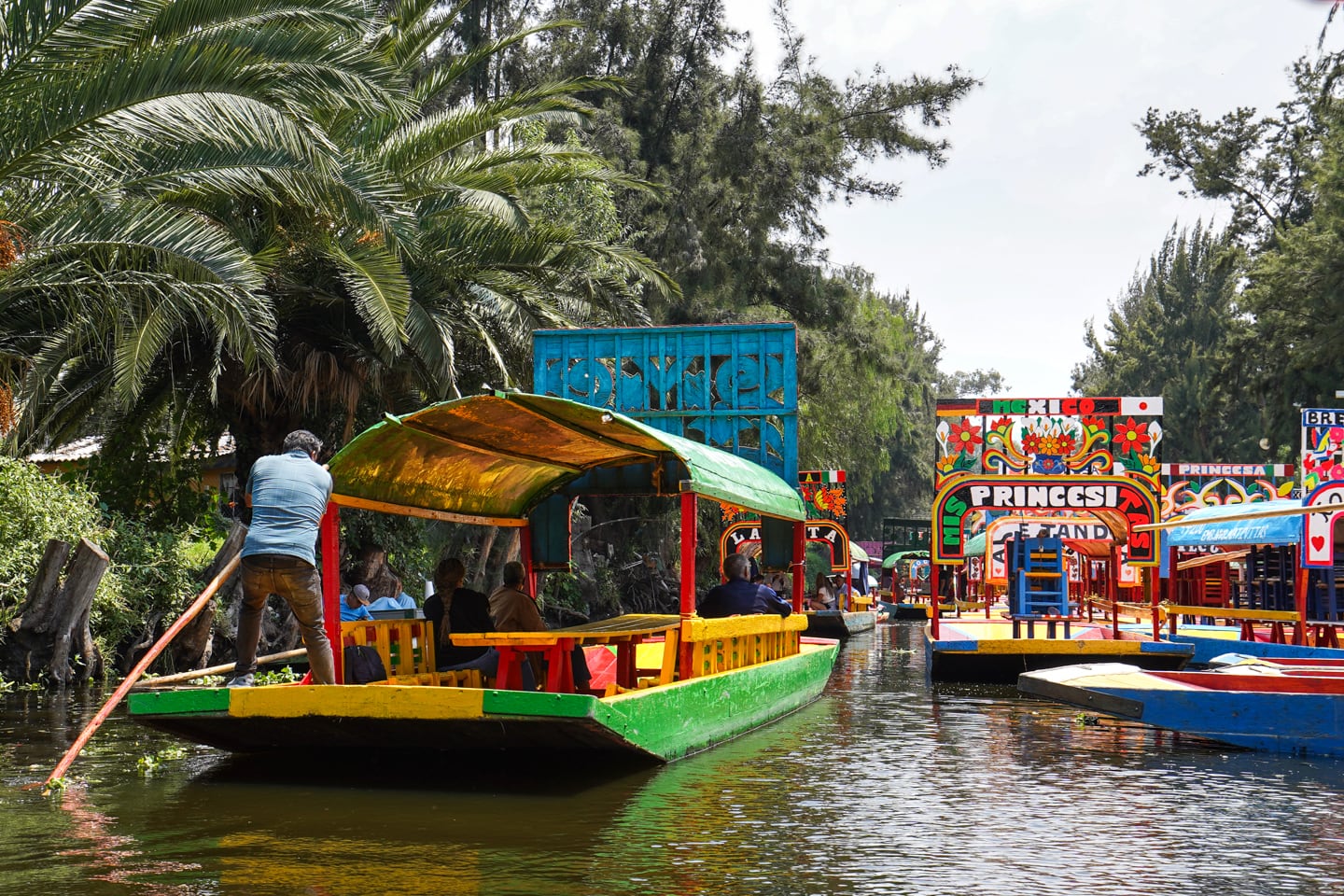
Insane Crowds (Especially on the Weekends)
This one’s a BIG reason not to visit…at least on certain days and seasons. The Xochimilco canals are both narrow AND a very popular tourist draw—attracting throngs of domestic and foreign visitors year-round.
In the high tourist season (and on weekends any time of year), expect to find long waits for boats, and LOTS of bumper-to-bumper passenger and vendor trajineras on the water.
However, if you have the flexibility in your travel itinerary to avoid visiting on Friday-Sunday, or during festivals and holidays, you should be able to skirt most of the crowds.
If you must go during a busy time, try to get to the embarcadero as early as possible. Tours start running at 9am and go until about 6pm.
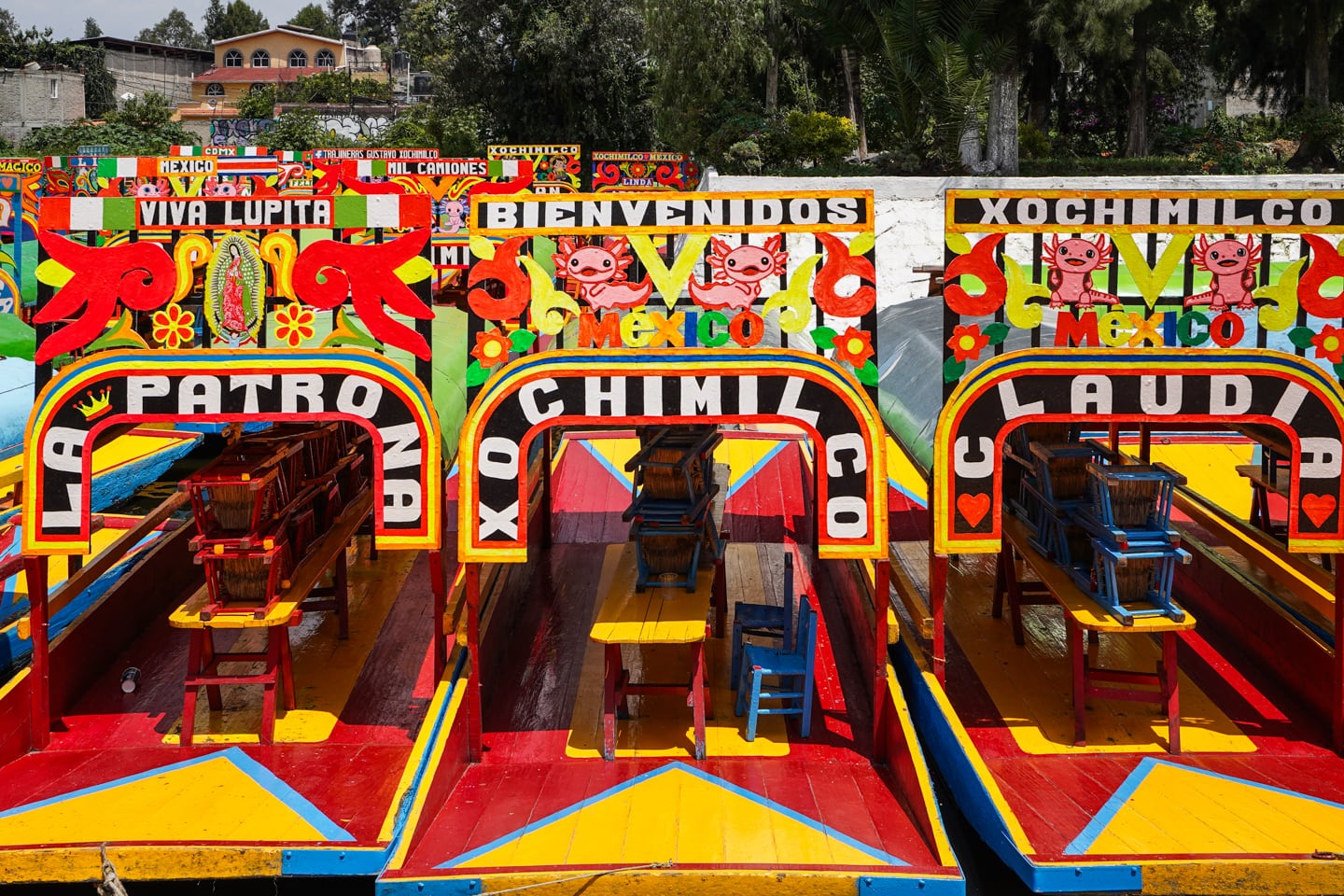
Xochimilco is Far (& NOT Cheap!)
Xochimilco might be a mere ten miles from Mexico City’s Centro Historico as the crow flies, but don’t let that fool you. This trip is a time commitment.
We recommend allocating at minimum four hours midweek and the better part of a day on a weekend. If you get there on your own (see above) expect your transit time to be in the neighborhood of 90 minutes each way (from central CDMX).
Even if you take a taxi or Uber, it can take between 40 and 90 minutes from the Centro Historico each way.
In terms of costs, the boat tour, transport, meals, and drinks can add up quickly, making this one of the more expensive day trips in and around CDMX—particularly if you’re traveling on a shoestring.
For example, if you’re taking a taxi each way and buying food on the boat, expect to pay upwards of US$100 for your outing.
If you’re looking to cut costs, we’ve offered several money-saving tips scattered throughout this article related to transport, food, and boat sharing.
All that said, if you’ve got the budget, we think a Xochimilco canal boat ride is worth the time and money.
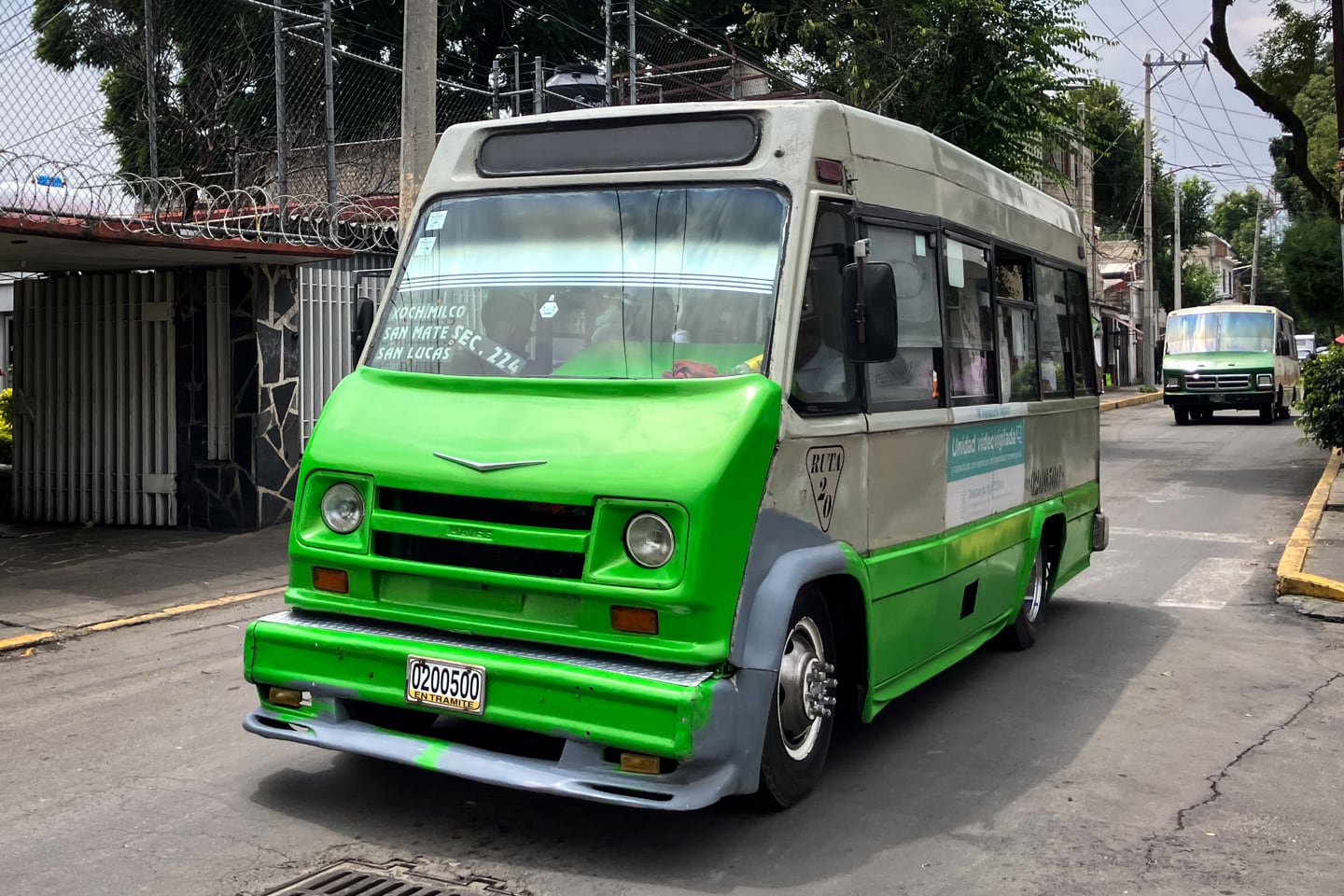
There’s Not a Whole Lot Else to Do in the Area
This last point is purely subjective. True, some bloggers gush about exploring the nooks and crannies of Xochimilco Town, diving into the local cuisine, etc. (it’s actually a neighborhood of CDMX, but we’re calling it a “Town” for simplicity’s sake to distinguish it from the Floating Gardens).
Lori and I have visited nearly every Mexican state and lived in Mexico full-time for the past four years. Personally, we didn’t find the neighborhood to be remarkable in any meaningful way (outside of the UNESCO-designated Floating Gardens, of course).
Honestly, there doesn’t seem to be a lot to distinguish Xochimilco Town from hundreds of other towns across the country. As such, it’s hard for us to recommend spending more time in the borough when you’ve got the whole of CDMX (and countless other fascinating neighborhoods) to explore.
With that said, on your way back to central CDMX, we strongly recommend spending a few hours in the historic neighborhood of Coyoacan, home to Frida Kahlo’s famous Blue House museum, among other worthwhile attractions.
To get there from Xochimilco station, you can take the Tren Ligero (Light Rail) north to Tasqueña station (MX$3 / 40 minutes), then it’s a 15-minute taxi/Uber ride over to central Coyoacan.
What Else to Know for Your Day Trip
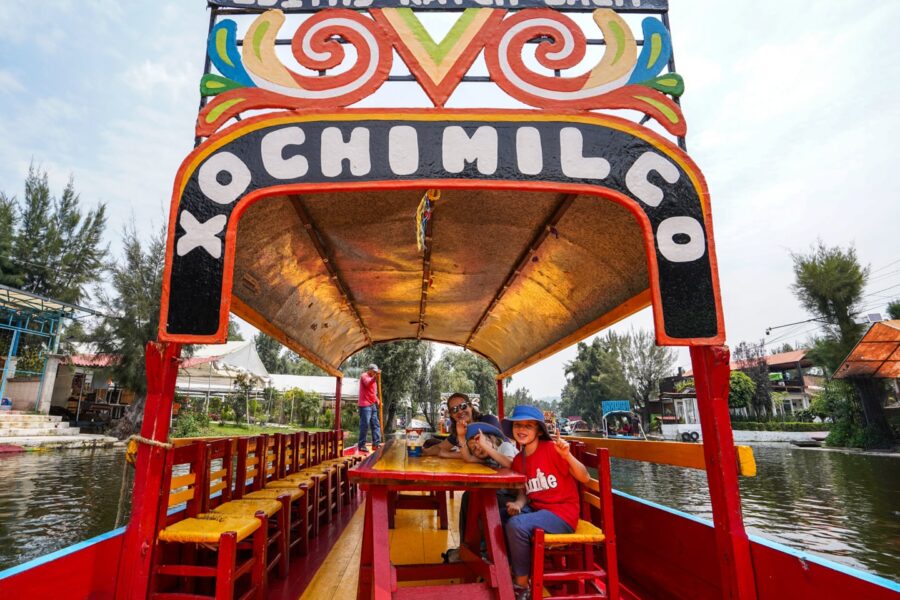
What is Xochimilco famous for?
The CDMX borough of Xochimilco is known for its Floating Gardens, a vast network of pre-colonial artificial islands (chinampas) and canals that is still in use to this day. The area is a UNESCO World Heritage Site, and exploring the canals with a brightly-painted trajinera gondola is one of the most popular activities for visitors to Mexico City.
How long is the Xochimilco boat ride?
Typically, the canal boat ride lasts about one hour, but you can arrange a tour for more hours if you’d like.
How much does a Xochimilco canal boat ride cost?
As of August 2024, the government-set rate is MX$750. Rates, of course, are subject to change and increase every year or two. Some embarcaderos will quote higher rates, which is generally against regulations. If in doubt, the current rate is always posted on an official government banner at the Nuevo Nativitas embarcadero.
Is Xochimilco worth visiting?
The traditional Xochimilco canal ride can be extremely popular at times (read: crush of humanity) and it can seem like the parade of floating hawkers is never-ending. But there’s a lot of history in these waterways no doubt offering a unique cultural and sensory experience for visitors. In that sense, we believe that Xochimilco is worth visiting if you’ve got the time and budget.
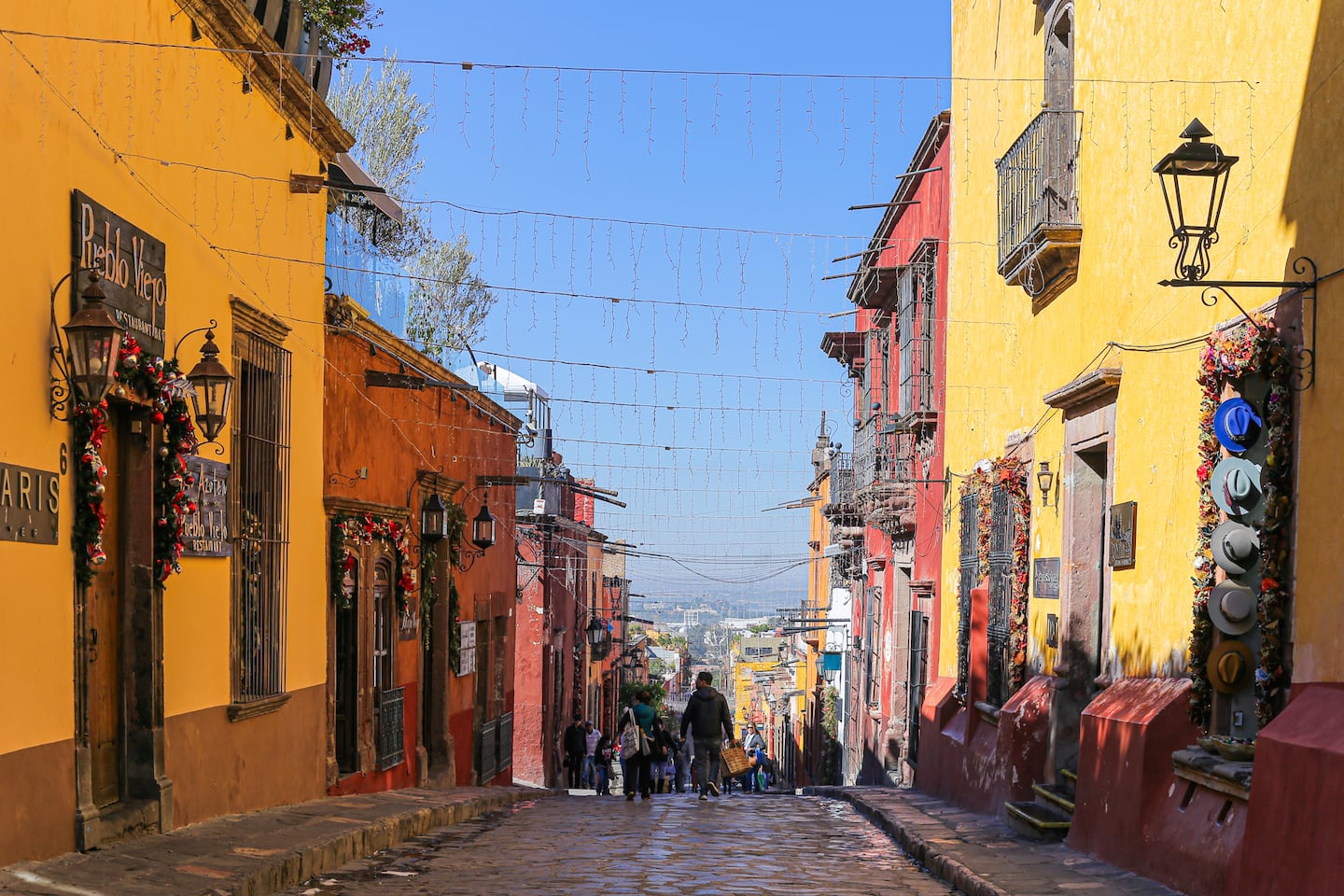
More Reading for Your Mexico Trip
Central Highlands
- Teotihuacan Pyramids: Best Tours from Mexico City
- Monte Albán (Oaxaca): Complete Guide to Visiting
- Tzintzuntzan Pyramids & Pueblo Magico (Michoacan)
- Isla de Janitzio (Michoacan): What to See & How to Visit
- Lava Church of Old San Juan Parangaricutiro (Michoacan)
- Sanctuary of Atotonilco (San Miguel de Allende)
Nayarit & Jalisco
- Mascota, Jalisco: A Detailed Visitor Guide
- 10 Reasons to Visit Yelapa, Jalisco
- Sayulita Beaches: Complete Guide to the Area’s Best
- Sayulita Hotels: A Resident’s Guide to the Best Stays
The Yucatan